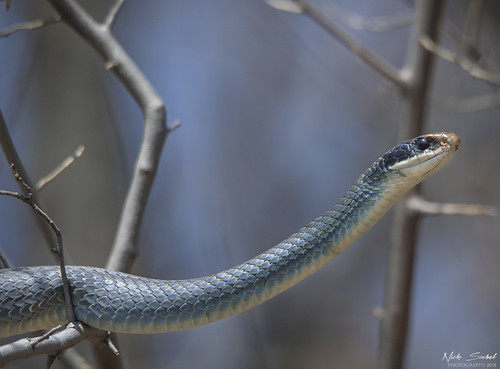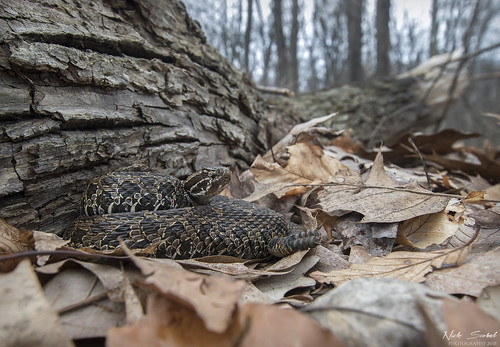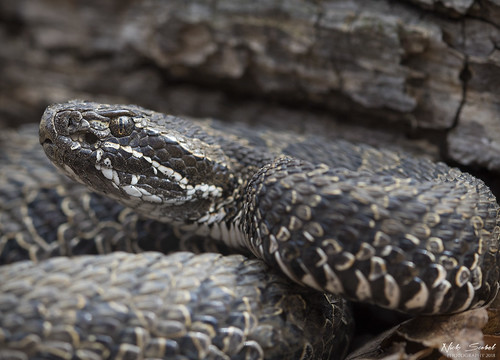So far, the spring of 2018 has been one for the record books. In fact, it's the coldest March and April in the Great Lakes since 1936. Long periods of cold, snow, and even freezing rain have only been punctuated by a few days above 50 degrees Fahrenheit. It hasn't kept the reptiles and amphibians completely at bay though, the end of March brought a few days above freezing and eventually brought a night of heavy rain to the southern Lower Peninsula. I ventured out with a few friends in hopes of seeing the beginning of the salamander migrations. We were not disappointed as we quickly observed over 200 individuals at the first pool we stopped at.
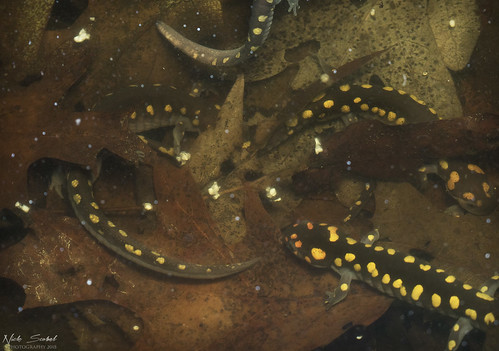 |
| A group of male Spotted Salamanders (Ambystoma maculatum) congregate in a pool in Washtenaw County, Michigan. |
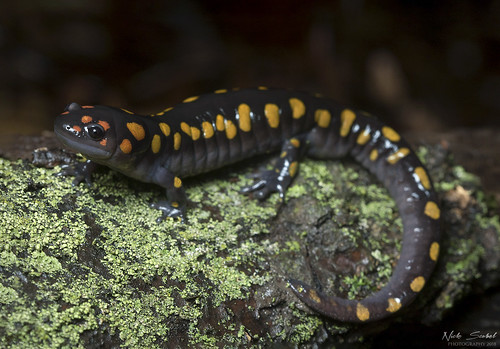 |
| A gorgeous male Spotted Salamander (Ambystoma maculatum) found migrating towards its breeding pool. |
Like all Ambystomatids, the Spotted Salamander begins to migrate to vernal pools on rainy nights in the early spring to take advantage of the cover of darkness. In some cases, they may travel great distances over forest ridges to reach their destination. On nights like this, its possible to observe salamanders just about anywhere; swimming in the pool, hiding under logs, or crawling across the forest floor towards their pool.
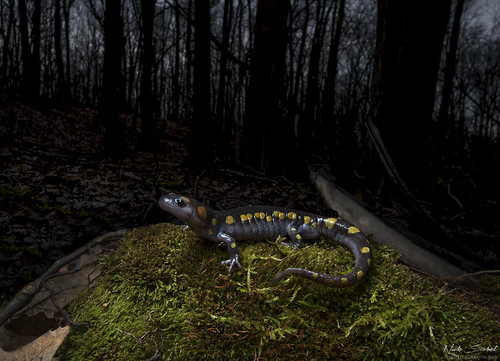 |
| An adult male Spotted Salamander (Ambystoma maculatum) crawls across the forest floor on a rainy night. |
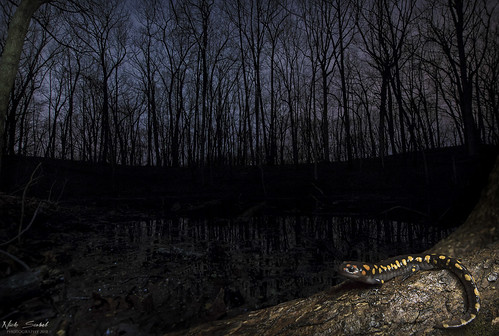 |
| A male Spotted Salamander (Ambystoma maculatum) prepares to enter its vernal pool in southeast Michigan. |
It ended up being a wild few nights filled with lots of salamanders. It would be the last herp activity for several weeks as the winter weather returned, even dropping 4 inches of snow in places in the second week of April. Michigan finally received some spring like weather on April 12th, with temperatures rising into the low 70s. Ontario native Ryan Wolfe had asked to come out to southeast Michigan to look for snakes, so we met up mid morning and set out to find some serpents. Our first target was one that is exceedingly rare in Ontario, the blue racer. We arrived to our destination and not more than a minute after exiting the car Ryan called out that he had found one. The snake was large and robust, a healthy specimen in good shape after the long winter.
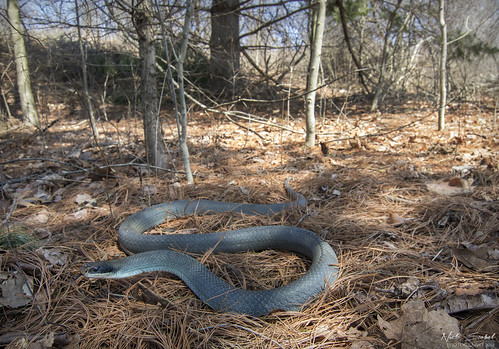 |
| A beautiful adult Blue Racer (Coluber constrictor foxii) from a forested ridge in southeast Michigan. |
As we released a snake, it quickly made its way up a nearby tree. Racers aren't really considered to be an arboreal species, but they are accomplished climbers and do not hesitate to scale trees if necessary. We spotted a few more common species. A short time later, while traversing the edge of a lowland I spotted a familiar pattern coiled amongst the leaf litter. Sauga!
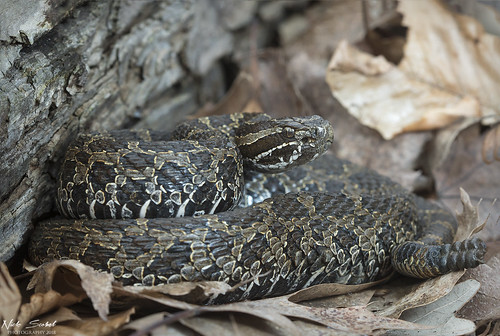 |
| An adult Eastern Massasauga Rattlesnake (Sistrurus catenatus) from the edge of a fen in southeast Michigan. |
To me, nothing signals the arrival of spring like spotting the first rattlesnake of the year. This was a healthy snake, and it pulled itself into a tight coil while I took a few photos. We continued on and it wasn't long before Ryan spotted a large Blanding's Turtle walking through the forest towards a vernal pool.
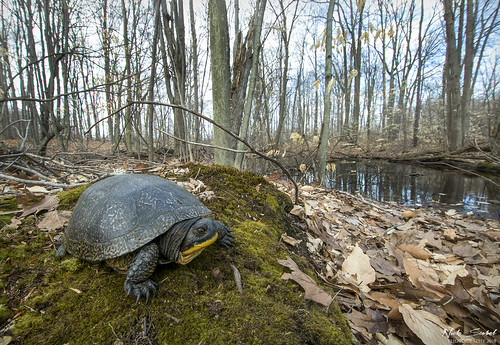 |
| A male Blanding's Turtle (Emydoidea blandingii) heads towards a vernal pool in southeast Michigan. |
In the spring, Blanding's seek out semi-permanent bodies of water like vernal pools before moving to more permanent sources later in the summer. They can often be seen basking with large numbers of painted turtles in roadside ponds, marshes, and even ditches. The next morning I had to work, but was able to get out in the early afternoon with overcast skies and temperatures in the low 60s. I ventured to one of my favorite locations in the state and before long was treated to a feisty massasauga in a wet meadow.
 |
| An adult Eastern Massasauga Rattlesnake (Sistrurus catenatus) found basking in a wet meadow on an overcast afternoon. |
Finding the first two saugas of the year on consecutive days feels like a good omen, as I'll be spending most of my time working a new job that will center directly on them, but stay tuned for more on that later. We're currently receiving freezing rain that should end by nightfall, hopefully it won't be long til we're rid of winter weather and can focus on finding more herps.









